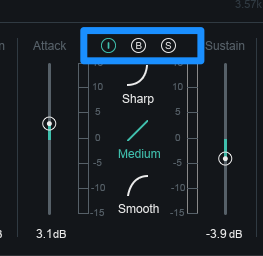

Of course this also comes with a newly added Tame button that moderates at the edges of a trash distortion to keep things from heading in the direction of hell. This addition can really push the upper range up to the heavens. There are also some new module combinations, as in the case of Exciter with the new Trash mode. And there truly are a generous number of great presets for many different groups of sounds.Īll the new modules and tools are just a part of the story as many old modules are also improved, adapted to the overall current look and having some new features, making them more functional and user friendly. All those are the cases where you can start with presets rather than with Mix Assistant.

This could also happen when using a typical instrument from a specific group, but having some other intention, chasing some specific color not typical for that instrument. But it still will happen that you may use unusual, non-typical kinds of sounds for a specific purpose, for example, some drum or bass sounds that don’t sound like either bass or drum, but you would like them to function in that way. Mix Assistant has improved from version to version, being able to correctly deal with increasingly diverse instrument groups. So why do we need presets?” Actually, that is a good point. So, have we come to a point where you raise your eyebrow and wonder: “Hmm, so Neutron 4 is supposed to have the intelligent Mix Assistant that can analyze track and automatically apply all effects into the chain making it exactly right for an arrangement. I expect that the presets can serve as a nice collection of variation to specific tracks for someone less than skilled in the mixing process. Version 4 also brings plenty of new presets that I found useful in certain specific cases. Not As Important, but Still Important – Presets Of course, it can’t turn a cow into an airplane, but still, it’s a highly useful tool. This is a very useful addition that potentially can save you much time by allowing you to efficiently get a similar vibe to the sound you are looking for.
#Izotope transient shaper full#
Of course, the main difference is that in Neutron 4 this function is dedicated more to the particular instrument and not the full mix as is the case of Ozone.
#Izotope transient shaper software#
A similar option was already present in the previous version of the Ozone software package from the same developer. After choosing the source for matching, you can then easily set a ratio between auto-analyzed results and the Target library or your reference track. If you are looking for a specific sound or color, you can drag your sound source to be analyzed and have it applied to your track, or you can simply browse among a selection of presets inside the Target library populated with preconfigured settings that come with Neutron 4. There is also a Tone Match slider at the top of the Assistant window. From there you can apply different settings for different frequency ranges, or limit the effect only to a particular frequency range. Width is just a width control, but the good thing is that all three modules can be also further edited inside the Edit window. Nitty, gritty and dirty – actually, totally trashy. It is so cool when you apply it to the drums or bass or almost any other instrument. At this level, everything is fine and perfect, but at the moment when you press the bottom left knob on the XY window, clicking inside the Trash mode, things easily go over the top – I like it – it’s only rock’n’ roll, but I like it. Here you can choose between several different types of distortion. On the other hand, it is all too easy to overdo things with the Distortion module that comes next. Push is programmed in such a way that it adds mojo to the track without pushing it over the limit. In Push we also find the Attack and Sustain sliding knobs for applying a transient shaper. By pushing the slider down, we are, not unsurprisingly, adding compression. By pushing the Punch slider up we are adding expansion. Punch adds a kind of old school compression. But let’s go back to the Assistant window and to its own set of newly added effects that come with the latest version. There we can fine tune any module that appeared in a chain, allowing us to also add some additional effects. Of course, for more detailed editing we could easily switch to the well-known Edit window, the one that is quite familiar to us from previous versions. It becomes the main window from where you apply basic changes to analyzed tracks – more precisely, applying Punch, Distort and Width. A big newcomer to the Neutron 4 is Assistant View.


 0 kommentar(er)
0 kommentar(er)
